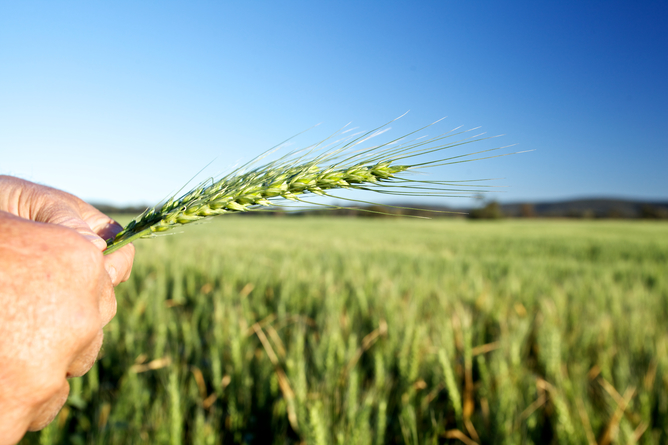
In his 2013 election campaign, Tony Abbott promised his government would build a world-class “five pillar economy”, encompassing manufacturing, agriculture, services, education and mining. Two years later, as his government prepares its second federal budget, just how are these sectors faring?
Agriculture has always been and is likely to remain for some time, an important component of the Australian economy. While agriculture contributes just 2.3% of GDP, its diminishing importance is not the result of any reduction in output but rather to the growth in manufacturing and the service-based sectors of the economy.
Today, more than 307,000 people are employed in agriculture. Agriculture is the biggest employer in rural and regional communities, but if we consider all those employed in the input and output sectors, food manufacturing and processing, distribution and retail, agriculture provides employment for more than 1.6 million Australians.
Today, Australia’s 135,000 farmers produce enough food to feed 80 million people. Not only do they provide 93% of the domestic food supply, but it supports an export market valued at more than A$41 billion per annum – that’s over 13% of export revenue, according to the Australian Bureau of Agricultural and Resource Economics and Sciences (ABARES).
By value, ABARES figures show the major commodities are grains and oilseeds (29.8%), meat (24.0%), the industrial crops (sugar, cotton and wine)(13.5%), wool (7.0%), dairy (6.6%) and horticulture (4.5%).

Dairy accounts for 6.6% of Australia’s exports.
With population growth and rising personal income, the emerging middle class in Asia provides the major market for over 60% of Australian agricultural exports. Not surprisingly, China (22.0%) is Australia’s single most important market, but sales to Japan (9.4%), Indonesia (7.3%), Korea (5.8%), Malaysia (3.0%) and Singapore (2.8%) continue to grow.
Trade agreements and protection
However, in supplying the increasing demand for food in the region, Australia faces some serious competition and some major institutional impediments. While Australia accounts for just 1% of global agriculture production according to the Food and Agriculture Organization of the United Nations (FAOStat), despite the emergence of the World Trade Organisation in 1995, the majority of sovereign states have sought exemptions for agriculture and food.
Rather than to rely on global markets, most of the world’s most wealthy industrialised countries have sought to protect their farmers from competition through maintaining high import tariffs, import quotas and direct price support mechanisms.
Today, the OECD estimates that producer support estimates amount to more than US$257 billion per annum. While European farmers receive the bulk of the support (US$116 billion), and farmers in Japan, the US and Korea receive US$54 billion, US$31 billion and US$22 billion respectively, farmers in Australia receive just US$960 million in government support.
Recently negotiated bilateral free trade agreements will provide some relief in the mid to long-term, but the sector continues to struggle with falling commodity prices and declining profitability. Perhaps more than any other sector of the economy, agricultural productivity in Australia is highly dependent on seasonal variations in rainfall.
Challenges to the industry
Climate change is influencing both the intensity and duration of rainfall and thus redefining the suitability of many areas for farming. For some farmers, this will inevitably mean surrendering their farms as the level of farm indebtedness becomes unsustainable.
For others, significant investments in infrastructure and technology will provide the key, but as agriculture is and will always remain a high risk industry, the sector often fails to attract the required investment capital. Historically, farmers have responded to their eroding terms of trade by increasing productivity. For many farmers, consolidation provided immediate gains from the economies of scale, but over the last decade, productivity has begun to decline.

Less rainfall is affecting the agricultural industry
Today, agriculture in Australia faces an acute shortage in skilled labour. Our farmers are ageing and the uncertainty in returns associated with year-to-year variations in rainfall and price volatility present an image that too few university graduates find appealing.
While commodity prices are trending downwards, increasing costs are putting more pressure on profit margins. However, it’s the cost escalation post farm-gate that continues to put most pressure on Australia’s international competitiveness.
The Australian Export Grains Innovation Centre (AEGIC) recently estimated that bulk handling charges, freight and port charges amounted to 25-30% of the costs of grain production. The high value of the Australian dollar hasn’t helped either.
Holding onto our advantage
Recent falls relative to the US dollar have provided some relief, but a low dollar will inevitably result in an increase in input costs for chemicals, fertilisers and farm machinery.
But as a commodity, food is fundamentally undervalued. The FAO suggests that as much as 35% of the food produced is wasted along the food chain. As a society, we need to ensure that the prices we pay at a retail store truly reflect all the costs of production including our environmental footprint.
Australian farmers are world leaders in dryland farming, natural resource management and sustainable agriculture, but it’s hard to be green when you’re in the red.
Consumers are showing much greater interest in food quality, and food safety is paramount. In this respect, Australia has an enviable reputation. However, to protect that reputation, a whole of supply chain approach must be adopted.
While many lament the Australian government’s rigid approach to “fortress Australia”, biosecurity must prevail to protect Australia’s clean and green image and our reputation for producing safe, nutritious food.







